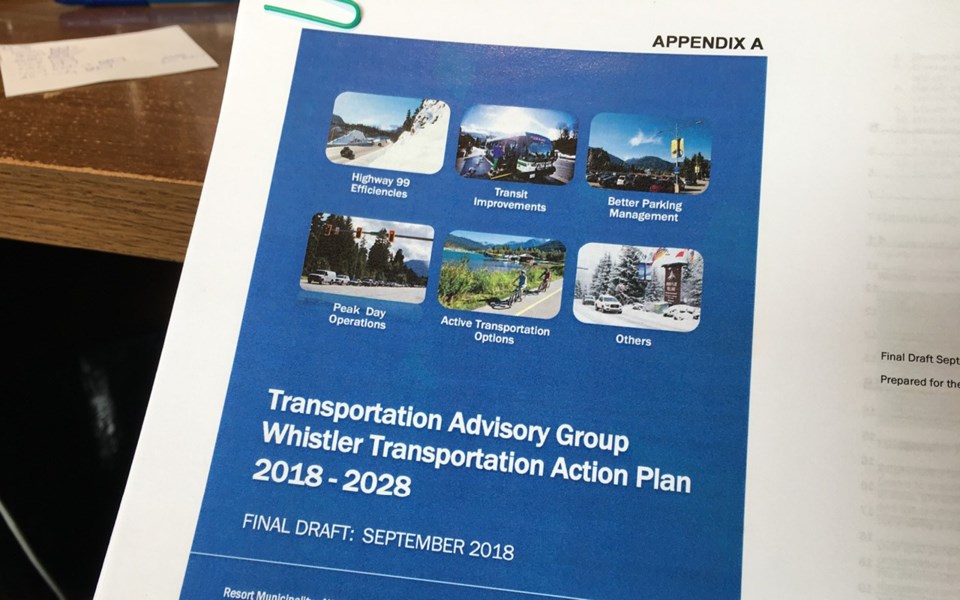After two and a half years, Whistler's re-formed Transportation Advisory Group (TAG) is ready to take a step back with the tabling of its Transportation Action Plan 2018-2028.
"The long-term action plan has many different lead organizations, many different partners that are involved, and different timelines to move each of the actions forward," said transportation demand management coordinator Emma DalSanto in a presentation to council.
"And in here we have over 100 actions over the next 10 years to move forward on."
From now on, the TAG—comprised of reps from Whistler Blackcomb, Tourism Whistler, the Whistler Chamber of Commerce, BC Transit, the Ministry of Transportation and Infrastructure (MOTI), the Resort Municipality of Whistler (RMOW) and four members at large—will meet bi-annually in the spring and fall to review the plan's progress.
The plan's proposed actions are organized by seven goals: providing a quality, safe and accessible travel experience for everyone in Whistler; integrating the transportation system with land-use planning to minimize the need to travel by vehicle; minimizing greenhouse gas emissions; supporting increased transit and other preferred modes; ensuring the transportation system anticipates future needs and growth in a cost-effective manner; ensuring resiliency by providing viable alternative road, railway, water and air transport routes, and; ensuring that the transportation system respects Whistler's natural environment, minimizes climate impacts, and improves the livability of the resort community.
Some, like transitioning to a fully electric transit fleet, will require cooperation.
"That's not a municipal lead item, really that's BC Transit that buys the vehicles, " DalSanto said.
"But in partnership with BC Transit we'd be working on that, and that's not something that's going to happen overnight. That's why it's in the long-term plan. It's planning ahead for these types of things."
Other actions in the plan include increasing transit service, filling in gaps on the Valley Trail, constructing bike parking at busy trailheads, implementing regional transit, working with Transport Canada to limit air traffic over residential neighbourhoods and exploring the development of queue-jumper and transit-only bus lanes on Highway 99.
After the presentation, Councillor Cathy Jewett asked about the queue-jumping lanes, noting they were originally supposed to be tested this year.
The RMOW has received a preliminary report on capacity improvements through Whistler, said general manager of infrastructure services James Hallisey, but there's still some work to do there.
"The queue-jumper lanes weren't, I don't think, very well developed in that report so far, and we're hoping that MOTI can improve just the thought process around where and when they could use those," Hallisey said, adding that seeing them on local highways next summer "would be optimistic for sure, but we'll keep pushing in that direction."
The plan also includes background on TAG's process since re-forming in December 2015, as well as recaps of community engagement and actions taken so far.
"It also describes the implementation process and making sure that we have the process for evaluation and monitoring ... (which) helps us with informed decisions making, it helps us with future action planning and prioritizing and resource allocation," DalSanto said.
Find the full plan at www.whistler.ca/movingwhistler.




